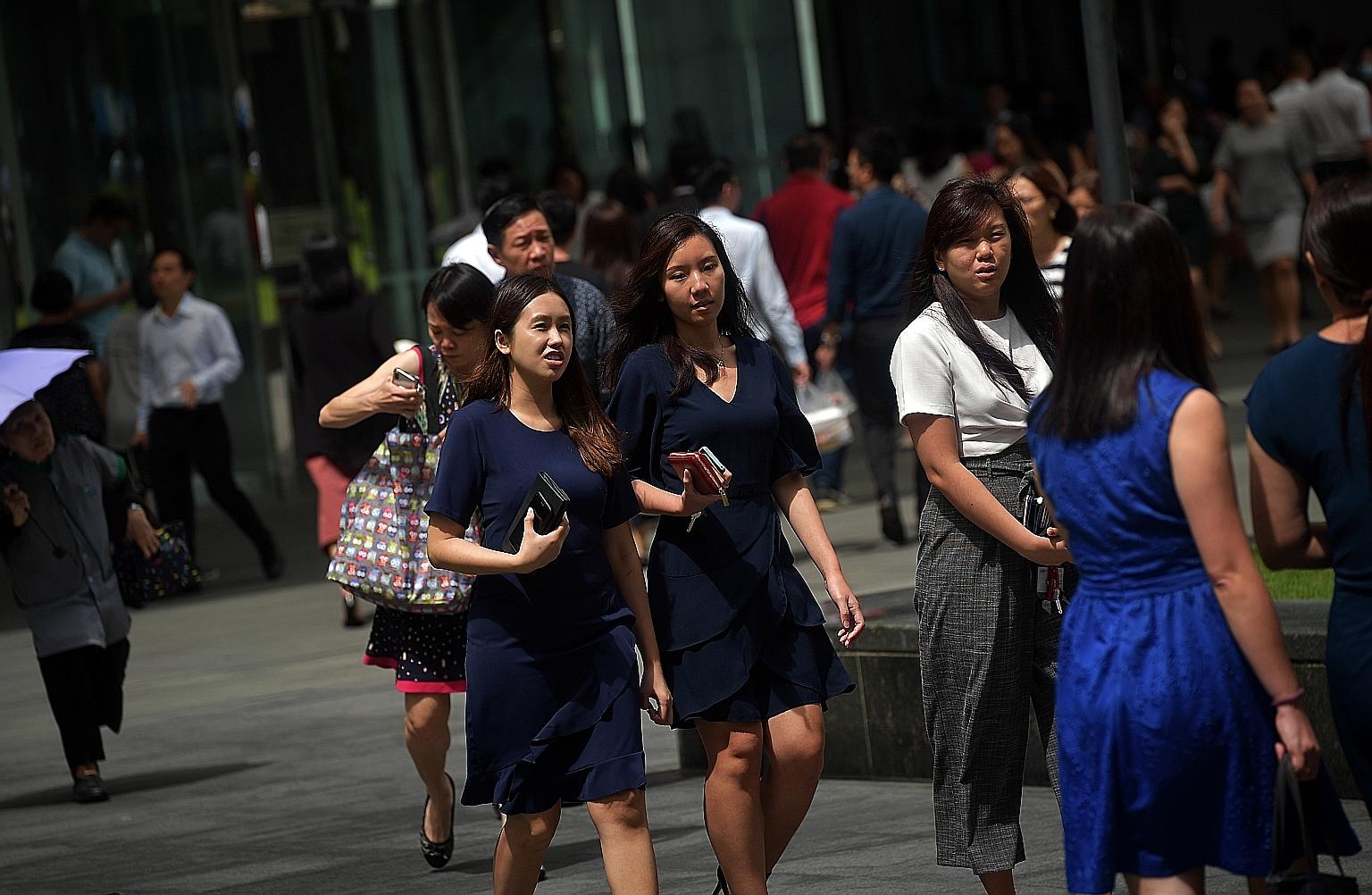Adjusted gender pay gap narrows over more than a decade
It improves to 6% in 2018 from 8.8% in 2002 but higher-paying roles tend to be male dominated
Sign up now: Get ST's newsletters delivered to your inbox

The study noted that more men have jobs with higher levels of wage increases while women tend to be over-represented in roles with lower wage hikes.
ST PHOTO: KUA CHEE SIONG
Follow topic:
The gap between the median pay of men and women here has narrowed over more than a decade, after removing the effects of factors such as age and occupation.
The adjusted gender pay gap was 6 per cent - or $342 a month - in 2018, down from 8.8 per cent in 2002, according to a new study released yesterday.
But it means a woman may still be doing the same job as her male colleague of the same age and education level for less pay.
The study by the Ministry of Manpower (MOM) and National University of Singapore economist Jessica Pan found that the gap was wider when the effects of age, education, occupation, industry and usual hours worked were not removed.
The unadjusted median monthly salary of a woman in full-time work was 16.3 per cent less than that of her male counterpart in 2018, a slightly larger gap than 16 per cent in 2002.
The study is based on data for Singaporeans and permanent residents aged 25 to 54 taken from the Comprehensive Labour Force Survey of about 33,000 households.
It is the first local study to analyse the pay gap to this level of detail, said an MOM spokesman.
The study noted that Singapore's gap is lower than the latest available figures from countries like the United States (8 per cent), Canada (7.7 per cent to 8.3 per cent) and China (18.3 per cent).
The researchers used a statistical model to calculate the share of the pay gap that is due to various factors: age, education, occupation, industry and usual hours worked.
MOM noted that the employment rate among women rose from 62.2 per cent to 78 per cent over the period and more women are now in professional, manager, executive and technician occupations.
But higher-paying roles such as company heads, and software developers and analysts, are still male dominated. Women tend to be in lower-paying roles, such as general office clerks and human resource officers. This divergence is called occupational segregation.
Furthermore, more men have jobs with higher levels of wage increases while women tend to be over-represented in roles with lower wage increases.
The study found that the occupation factor accounted for 43 per cent of the pay gap in 2018 and played the biggest role. Its impact also increased over the years, as it accounted for only 16 per cent of the gap in 2002.
"Despite women upgrading their occupations and improving their labour market attachment, gender differences in occupational wages had become larger due to occupation income growth favouring men," the researchers said.
As for the remainder of the pay gap that is unexplained - after the effects of age, education, occupation, industry and usual hours worked are removed in the adjustment - the report said it could be due to factors such as firm type, job scope, parenthood and work experience. An MOM spokesman said other studies show the cost of parenthood is a big factor in the gender pay gap, though MOM is not ruling out inherent biases by employers having an effect too.
Singapore Human Resources Institute president Low Peck Kem said pay should be determined by the job and its scope, and the skills and capabilities of the candidate, rather than gender. "By pricing the job fairly, the company stands to gain from attracting and retaining the right talent, regardless of gender," she said.
National Trades Union Congress assistant secretary-general Patrick Tay said in a Facebook post that it is important to ensure women have access to more diverse job opportunities and higher value-added jobs, and to improve access to training especially for workers with lower pay.
MOM noted that there are initiatives in place to attract women to traditionally male-dominated fields like technology and cyber security. The Government also provides support for parents to share caregiving responsibilities, such as shared parental leave, and funding for flexible work arrangements.
Workers were not surprised to hear a pay gap still exists.
Marketing executive Alicia Wong, 35, said women's perceived performance may be affected by time spent on family. "I look forward to a time when things like maternity leave don't affect job prospects," she said.


